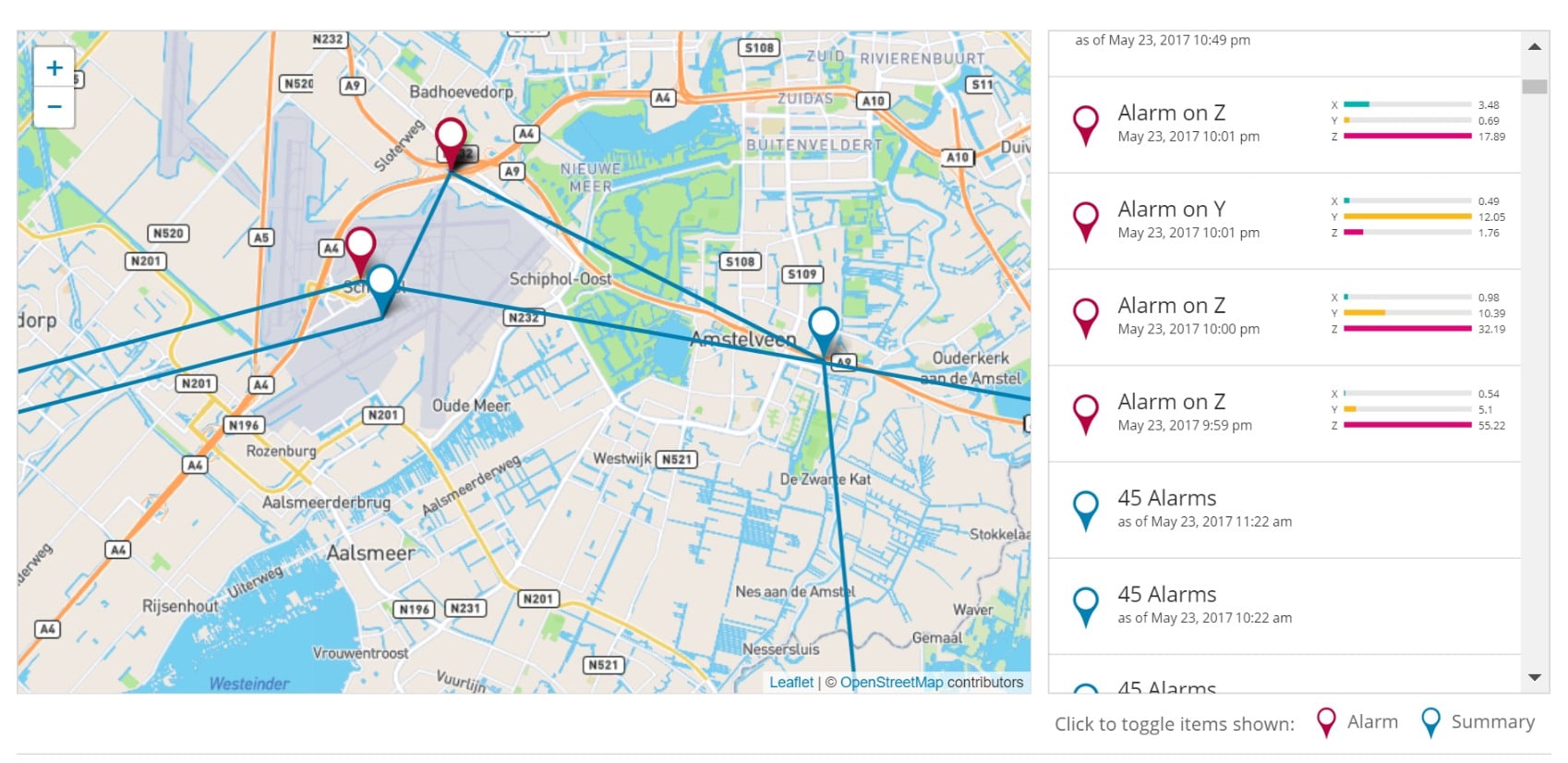Smart Logistics Solutions to Reduce Damage
The government of Singapore estimates a smart supply chain could save its logistics industry US$56 million annually, and trigger a productivity gain of 4,000 man-years. Condition monitoring is an integral part of that plan, as well as simply being good business.
Understanding the actual conditions cargo experiences during shipment goes a long way towards reducing damage. With actual data, supply chain managers can gain the deep insights needed to minimize current losses, prevent similar damage in the future, and even assign accountability.

Real-time monitoring for sensitive shipments is a good example of what’s possible. SpotBot™ Cellular monitors temperature, humidity, tilt, and impact. If those conditions exceed acceptable parameters, alerts are issued in real time, wherever there is a cellular signal. That lets shippers intervene immediately, working with carriers to remediate the problem. That could mean re-icing pharmaceuticals, rerouting industrial equipment to repair facilities, or immediately shipping replacement components, depending on the incident.

For other shipments, it’s enough to know whether items like automotive parts and medical devices experienced impacts or other conditions that may have caused damage. Passive, Shockwatch RFID labels, for instance, allow cargo to be logged as it passes RFID readers. Importantly, it also logs impacts that may cause damage. Therefore, shippers know whether incidents occurred between specific points and can ascribe accountability for any damage. Users say it has reduced damage in their supply chains by up to 60 percent. With multiple carriers and transportation modes needed, door-to-door, know exactly where – or whether – incidents occurred is vital.

Other monitors, like ShockLog® 248, record impact and temperature, and provide a downloadable report at the journey’s end. Inspectors on the receiving end, therefore, know whether to put the cargo into inventory or flag it for thorough inspection. Knowing which items may have hidden damage can save substantial trouble-shooting and repair costs later. This is as true for sensitive electronics, like computers, as it is for heavy industrial components – like electric transformers. Installing damaged components can contribute to larger, more expensive failures later, often after they are in use in remote regions.
Condition monitoring is only one part of the overall solution, however. Analyzing the data is the other part.

Developing a baseline and analyzing trends allows the deep insights managers need to make continual improvements. Many SpotSee monitors include reporting software to allow managers to spot trends quickly. Studying the patterns of incidents – whether for impact, temperature, humidity, or tilt – helps managers link event trends to carriers, routes, lanes, seasons, and holidays. This helps them determine whether there are challenges in their own facilities or at some other, specific, point in their global logistics operations. With this knowledge, managers can adjust shipping schedules, redesign packaging, retrain their own cargo handlers, change carriers, select different routes, or work with carriers to fine-tune operations.
Condition monitoring, clearly, is an important part of a smart logistics plan, by providing the deep insights that help logistics managers minimize current and future damage. With multiple solutions available, logistics managers can deploy the monitoring products that best suit their needs.







